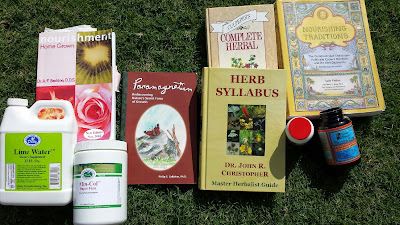Yesterday's video has a great teaser for the coming topics :)
https://www.youtube.com/watch?v=vasetjZecHo&index=2&list=PLHSoxioQtwZeQaRnO5_9AJB2RmevUpuPT
6 days ago
Purchasing, Canning, Gardening, Dehydrating, Logistics, Emergency Preparedness, Self Reliance,...and other related skills that you CAN do
This should NOT be solar screens but Should be a 'single', large, open weave to allow lots of air and light. I prefer the black/brown screen that is plastic feeling on the outside with a fiberglass core. This is usually one of the cheapest ones available ... BUT smell it to make sure it does NOT smell of chemicals etc. Do not use soft metals such as aluminum.I bought the smallest size amongst the long pine boards of the cheapest grade;
I selected them from the selection by three factors that make little difference: I laid them on the floor to find straighter ones; I looked for smaller or no knots; And I looked for the finer grained, lighter weight ones because they are less dense and easier on my stapler.Choose the dimensions: 5 strips per tray.
Identify a raised surface to use (outdoor table, not on the ground)
and determine largest size that still fits within the perimeter (don't want it knocked off easily).
Determine smallest size: Be sure that it fits through your back door while 'tray' is level (with hands on the sides)
Since mine are rectangular, there are three sizes; square would likely be simpler because when cutting there would be 4 strips the same size and one slightly shorter.
I chose mine to be deeper than the width that fits through my single doorway so that it could be bigger overall. (As an extra step, I planned so that it used the screen in such a manner that the left over strips could be used for sprouting screens on my jars or as two side by side halves for a tray.)
.jpg)
By being consistently precise it will be better fitting and a safer, longer lasting product. (Trays sitting flat on each other keeps flies out).Turn the boards so they are taller, not wider.
As can be deduced from the picture, I added a single Middle bar which measures so that it fits snugly inside. It needs to be nailed in at exactly center so that it stacks neatly on top of the other tray's Middle bar as well.
This gives the screen extra support so it doesn't sag and so the trays do not twist as much.
Since mine are rectangular, there are three lengths; square would likely be simpler because when cutting there would be 4 strips the same size and one slightly shorter.
Arrange your board strips so that the corners are rotating; by putting the boards in a 'spiral', you can only see the end of one from each side.
Use two nails per corner so that boards do not twist. I have used smaller nails but these work nicely.
Just buy a box so that in a few years you still have some to make new trays with. It is the most expensive investment.
.jpg)
Cut the screen as straight as easily possible, mostly between rows so that as little of the fiberglass is exposed as possible. Trim when length is exposed. (It creates microscopic slivers that I don't like rubbing my arm on.)
I used staples to attach the screen to the boards. Pull nearly as tight as possible because it will have some give and will sag over time. Pulling too tight; however, creates holes and tears. I assume flat tacks would also work. My attention to detail also demands that I space them as I go around the square so that I can re-pull/tighten and stagger the staples.
My stapler is a bit wimpy so I have to use a hammer to finish getting them flush.
Use the remnant wood strips to raise screen trays up off the table top for more air flow and also keeps trays from sitting in water if left out in the weather. When juices fall underneath, I can quickly hose off underneath without moving the trays.
Three trays is easy to do with the number of boards.
One tray is always your lid, Others are stacked with food so that they are ALL fully contained. I have not done more than four trays (three with food). I haven't ever had time to cut more than that in one day, but I think they would have to be rotated if you did as the inner level would not have as good exposure to air and sunlight.
.jpg)
Sprouted wheat, buckwheat, and other seeds dehydrate year round, the cooler temperature just changes how many days it takes. Take note: Be aware that the fully swollen seed is 'sprouted' and that after that a longer sprouted tail changes chemistry of the flour. (ex/ growing longer tails made chewy cookies into fluffy cookies)
In the Summer, stone fruit such as peaches, sliced on before 10 am is often dried by nightfall - so quickly it doesn't have time to brown- and can be removed in the evening or even left until morning when another batch can be put on. I often take my bowl of fruit, knife, and a water/trash bowl to rinse in, right out to the screen and cut so that it falls directly onto the trays.
"Fresh fruit is a wonderful gift from our
Creator meant to be savored for its
excellent flavor. While vegetables and
other foods have their place, nothing
else can take fresh fruits’ position as
“cream of the crop.”
Fruit quality can be measured from
many perspectives including, proper
sizing, flavor, brix reading, market
value, total solids, acid to brix ratio,
storage characteristics, and nutrient
density.
...Fruit above mediocre. "
quoted from brochure for event of the same name http://www.aglabs.com/pdfs/Fruit-Trees-On-Steroids.pdf
 | |
| Nutrition and Gardening, introduction into Electric Universe |


 |
| Cleaning and personal needs |

 | ||
| AcresUSA.com Many contributing authors over the years, This is a picture of the catalog of books. Their magazine subscription is Fantastic. |
 | |
| Nutrition and Gardening, introduction into Electric Universe |
The best intro and long term plan I've seen for gardening in clear terms: Scroll down to Watch online at Backtoedenfilm.comAnother great one for foundational introduction: Dirt the Movie (available on Netflix)